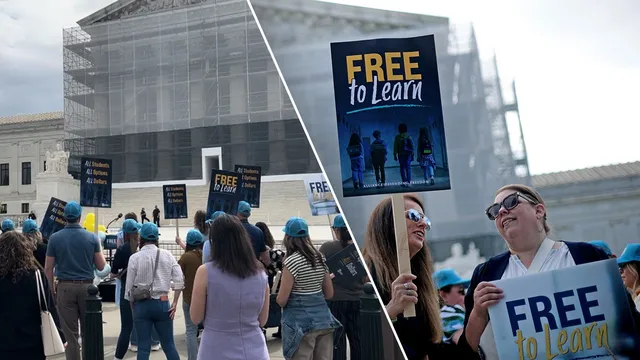
Supreme Court to decide fate of taxpayer-funded Catholic charter school
2025-05-01 08:50- St. Isidore of Seville Catholic Virtual School seeks to be the first publicly funded religious charter school in the U.S.
- The case involves critical constitutional questions regarding the separation of church and state.
- The Supreme Court's ruling could redefine the future of charter schools and public funding for religious education.
Express your sentiment!
Insights
In Oklahoma, a significant legal battle is unfolding concerning the first proposal for a publicly funded religious charter school in the United States. The St. Isidore of Seville Catholic Virtual School seeks to receive state funds, claiming it is eligible as a qualified organization under the state's charter school program. This proposal has led to a challenge focusing on interpretations of the First Amendment regarding the roles of religion and government, specifically whether government funds can be used to support religious education. The Oklahoma Supreme Court previously ruled that this situation could entangle church and state, thereby violating constitutional provisions. Currently, the U.S. Supreme Court is reviewing arguments regarding the constitutionality of this case. Numerous stakeholders, including state officials and educational advocacy groups, have expressed concerns about how such a ruling might impact public schools and the broader education system. Critics warn that allowing religious schools to access taxpayer funds may encourage the establishment of similar institutions nationwide, fundamentally altering educational landscapes. The case has caused divisions among Oklahoma's political leaders; while some support the initiative, others argue it infringes on the separation of church and state. The Supreme Court's decision could have sweeping implications, not only for the state of Oklahoma but for educational policy across the United States, particularly in states with similar charter laws and a growing emphasis on school choice.
Contexts
The history of the school choice movement in the United States is a multifaceted narrative that traces its roots back to the early 20th century. Initially, the concept of school choice gained traction during the civil rights era when parents and activists began to challenge the inequalities inherent in the public school system. The movement sought to provide families, particularly those in marginalized communities, with alternatives to their default neighborhood schools which often suffered from underfunding and systemic bias. Efforts during this period laid the groundwork for later reforms and programs, including magnet schools and open enrollment policies, which aimed to enhance educational opportunities and address issues of segregation in schools. In the 1980s and 1990s, the school choice movement gained substantial momentum with the introduction of charter schools and voucher programs. Charter schools, which are publicly funded but operate independently of the traditional public school system, became a popular option for parents seeking more personalized and innovative educational environments. This era witnessed significant advocacy from various think tanks and policy organizations promoting the idea that school choice could improve educational outcomes by fostering competition among schools. Voucher programs, which allocate public funding to families allowing them to choose private schools, were implemented in several states, sparking both enthusiasm and controversy regarding their effectiveness and impact on public school funding. The new millennium brought further evolution to the school choice landscape with the expansion of online education and homeschooling. Technological advancements facilitated the rise of virtual schools and hybrid learning models, providing families with diverse educational options. Additionally, states began to implement tax credit scholarship programs that incentivized donations to private school scholarships, thereby broadening the spectrum of choice available to families, especially those in low-income brackets. Despite the continued growth of school choice initiatives, debates about educational equity, accountability, and the role of public education have persisted, with critics arguing that school choice can exacerbate socioeconomic disparities and diminish resources for traditional public schools. As of 2025, the school choice movement remains a pivotal part of the educational landscape in the United States. Legislative and policy changes continue to shape the framework within which school choice operates. Advocates argue that providing families with diverse educational options leads to greater student achievement and empowerment. Meanwhile, opponents raise concerns about the potential fragmentation of the public school system and the implications for community cohesion. The ongoing dialogue surrounding school choice underscores the complexities of addressing educational needs in a rapidly evolving society, highlighting the need for careful consideration of both the benefits and challenges associated with educational reform.